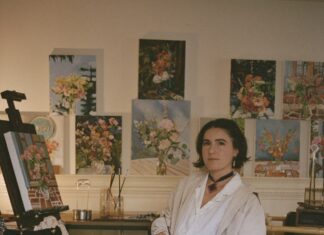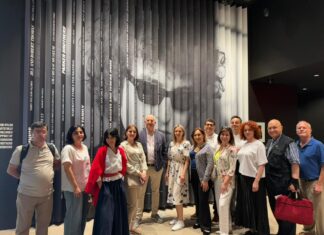This year marks the 100th anniversary of one of the most respected film directors in the world, Sergei Parajanov. His art is highly visual, and his movies resemble colorful paintings that move on the screen. Prominent Italian critic Ugo Casiraghi created a new term in the Italian language to describe Parajanov’s professional title: vizzionario instead of a movie director. The French filmmaker Jean Luc Godard noted, “In the temple of cinema, there are images, light, and reality. Sergei Parajanov was the master of that temple.”
In cinema, Parajanov became the most internationally acclaimed Armenian name, as Aram Khachaturian was in the field of music and Aivazovski in painting.
An ethnic Armenian, Sergei Parajanov was born in 1924 in Tiflis (modern Tbilisi), then the capital of the Georgian Soviet Republic, to father Iosif (Hovsep) Parajanov, and mother Siranush Bezhanova. Hovsep was buying and selling antique merchandise.
Los Angeles-based Armenian moviemaker Aleksander Atanesian provided some insights about Parajanov. Before coming to the United States, Atanesian lived in Georgia and Armenia, worked with Parajanov on many projects, and helped him in his household. “He was very educated. He could cite extensive passages from books he had read,” Atanesian noted in a Zoom-based interview.

When Parajanov was a schoolboy, Joseph Stalin’s top police officer, Lavrenti Beria, wanted his son Sergo to be friends with him, as Parajanov’s talents were apparent at a very young age: he sang songs and drew paintings from early childhood. After graduating from school, Parajanov worked at a toy factory. During World War II, Parajanov performed for wounded soldiers at hospitals.
In October of 1948, the NKVD, the Soviet secret police (led by Lavrenti Beria by this time), arrested Georgian artists for allegedly backtracking from existing ideological principles. Parajanov was one of the persecuted artists, although officially, he was charged with homosexuality. He was convicted to five years in prison but was released soon after.















